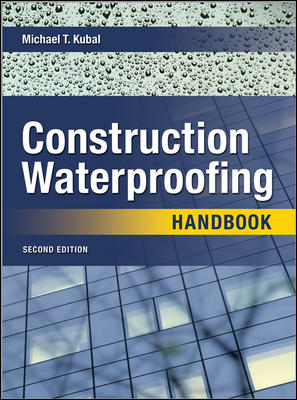Proper waterproofing at vertical and horizontal expansions joints is critical to the long-term success of a waterproofing application. Continual movement of these joints can lead to openings that allow for moisture infiltration if the detail is not properly completed. The detail provided is for expansion joint openings that are a maximum of one 1 inch in width. The designer should note that expansion joints that exceed one 1 inch in width require a separate detail. The detail provided only accommodates a maximum of 50 percent total movement.
The flashing material applied at expansion joints should be reinforced even if the waterproofing system is an unreinforced Liquid Applied Membrane system.
On vertical applications: apply approved sealant (typically polyurethane for concrete-to-concrete joints) in the opening with an approved backer rod to control the depth of the sealant. Apply the waterproofing manufacturers approved reinforced flashing material over the opening and up the vertical substrate. The flashing material should be fully adhered to both the vertical and horizontal substrates and should extend a minimum of 4-inches up the vertical surface.
On horizontal applications: apply approved sealant (typically polyurethane for concrete-to-concrete joints) in the opening with an approved backer rod to control the depth of the sealant. Apply the waterproofing manufacturers approved reinforced flashing material or membrane over the opening. The flashing material should be fully adhered to the substrate and overlap the opening by a minimum of 3-inches at each side of the joint. If a reglet is required, it should be a minimum of 1/2-inch in depth.
In each application method the manufacturers waterproofing material should be applied over the reinforced flashing. Application of flashing and waterproofing barrier should be in compliance with the manufacturers requirements for materials and application methods.
Protection for flashings and waterproofing barriers are required in backfill applications.







